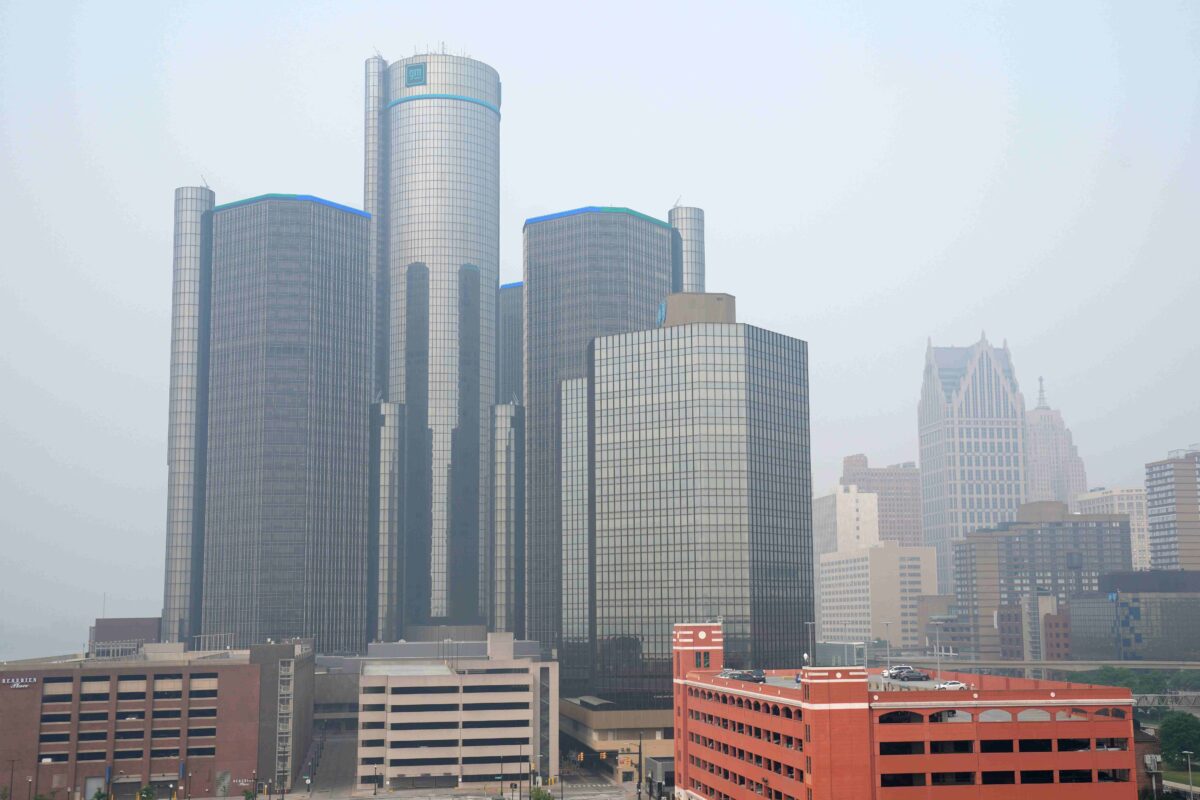Overview:
- EGLE is asking the EPA to exclude ozone data from June and July 2023, citing Canadian wildfire smoke, not local pollution, as the cause.
- The data, recorded at Detroit-area monitors, is part of an 80-page demonstration linking Ontario and Quebec fires to elevated ozone levels in Michigan.
- Advocates warn that excluding such data understates exposure, as residents still face pollution impacts.
The Michigan Department of Environment, Great Lakes, and Energy is once again asking the U.S. Environmental Protection Agency to disregard several days of ozone exceedances recorded at two Detroit-area air monitors, arguing that smoke from Canadian wildfires—not local pollution—was to blame.
The proposal, now open for public comment through November 28, would remove ozone data collected on June 19, June 29, June 30, and July 25, 2023 from regulatory determinations under the Clean Air Act. The data were recorded at EGLE’s Allen Park and East 7 Mile monitors.
EGLE’s 80-plus-page Exceptional Event Demonstration argues that intense wildfires in Ontario and Quebec transported smoke into southeast Michigan. Satellite, meteorological, and monitoring data show elevated levels of fine particles and ozone together under northerly flow and stagnant conditions—patterns EGLE says are not typical of local ozone formation here.
According to EGLE, these four days helped trigger an “action level” in Michigan’s maintenance plan; excluding them would keep the region in compliance with the 2015 ozone standard and preserve the attainment status granted in 2023.
“Attainment status” means whether an area meets the federal air-quality standards set by the U.S. Environmental Protection Agency — if it’s in attainment, the air meets those limits; if it’s not, the state must take extra steps to reduce pollution.
EGLE previously used the Exceptional Events Rule to exclude smoke-impacted days in Detroit as part of the 2023 redesignation to attainment, a move EPA approved; critics warned more exclusions could again minimize ongoing local air-quality problems. That redesignation discounted data from June 24 and 25, 2022, at the East 7 Mile monitor in Detroit.
A pattern of disputes over ozone enforcement
This request follows Planet Detroit’s reporting that the Sierra Club sent a notice of intent to sue in May 2025, alleging EGLE failed to follow its own maintenance-plan contingency measures when the East 7 Mile and Allen Park monitors hit thresholds that should have triggered “additional control measures.”
The group pointed to persistently high ozone on Detroit’s east side and high asthma burdens. Advocates, including Nick Leonard of the Great Lakes Environmental Law Center and Robert Shobe, a Detroit resident and advocate with Justice for Beniteau, argued the state was prioritizing regulatory maneuvering over health protections.
Under the rule, states can exclude data influenced by events that are “not reasonably controllable or preventable,” but they must provide a precise causal analysis. EGLE’s draft applies evidence to show wildfire smoke caused the high ozone on four days in June 2023 at East 7 Mile and Allen Park. It includes historical comparisons, transport analyses, air-mass patterns, and supporting modeling/metrics. The agency’s conclusion: if wildfire smoke had not been present, action-level triggers would not have been met.
Public-health and environmental justice advocates argue that excluding wildfire-related ozone data can understate real-world exposure; residents still breathe the pollution regardless of its source, and asthma risks on Detroit’s east side remain high. EGLE counters that overall ozone trends are improving and that its determinations follow EPA protocols.
If EPA concurs, those four days will be flagged as “exceptional” in EPA’s Air Quality System and excluded from compliance calculations; if not, Michigan may have to revisit its maintenance plan and consider additional controls to reduce ozone precursors, such as NOx and VOCs.
🗳️ Civic next steps: How you can get involved
Why it matters
⚡ How EPA and EGLE treat wildfire-related pollution could shape how clean-air compliance is measured across the Great Lakes—and whether residents see stronger or weaker enforcement.
Who’s making civic decisions
🏛️ EGLE Air Quality Division oversees Michigan’s compliance with federal air-quality standards; EPA Region 5 decides on the exceptional-event request.
How to take civic action now
- Read EGLE’s public notice
- Read the draft demonstration (PDF): Direct link
- Comment by 6 p.m. Nov. 28 via email HengesbachS1@Michigan.gov or mail EGLE Air Quality Division, Attn: Stephanie Hengesbach, P.O. Box 30260, Lansing, MI 48909-7760.
- Reference: “Southeast Michigan Ozone Exceptional Event Demonstration.”
What to watch for next
🗓️ Key dates: The public comment period closes November 28, 2025, at 6 p.m. EGLE will submit its final Exceptional Event package to EPA Region 5 for review. EPA is expected to issue a decision on whether to approve or deny the request in early 2026.
Civic impact
🌍 Following and weighing in on this process helps residents shape how Michigan measures, reports, and responds to pollution events that directly affect public health and local accountability.
Did you get involved? Please email us at connect@planetdetroit.org to let us know.
More coverage
Michigan fails to follow its own ozone pollution rules: Sierra Club
The Sierra Club threatens legal action against Michigan’s environmental regulators, accusing the state of neglecting its duty to curb ozone pollution in southeast Michigan, where communities, particularly on Detroit’s east side, face heightened asthma risks due to persistent air quality issues.
EPA says Southeast Michigan meets ozone standards; advocates push for more protection
Ground-level ozone levels have declined nationwide since the 1980s under the Clean Air Act. But some areas still face unhealthy air.
State regulators ask EPA to ignore Detroit air quality data, paving way to avoid ozone regulation
Ozone is a known cause and trigger of asthma. The asthma mortality rate in Detroit in 2017-2019 was about three times the rate for Michigan.




